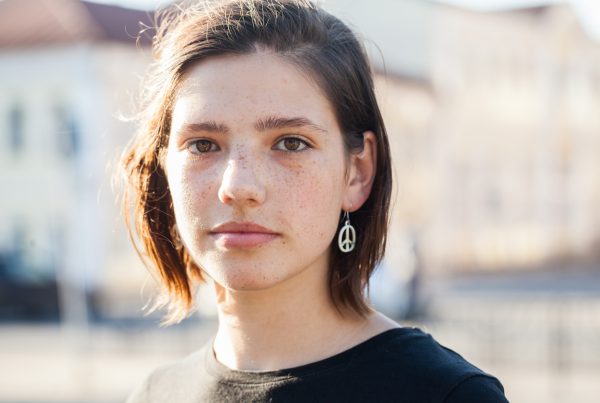The winter blues are a known and common phenomenon. Every winter, millions of people feel inexplicably down, to the point that over a quarter of Americans report fatigue and a fifth of Americans report significant stress during the holiday season.
But beyond the usual blues, several million Americans struggle with a more severe form of seasonal sadness called seasonal affective disorder.
Seasonal affective disorder is a mood disorder. What sets this condition apart from other mood disorders like major depressive disorder is that it correlates with the changing of the seasons, usually peaking in winter (most often) or summer.
Winter months in temperate climates are characterized by shorter days and longer nights. These long nights and lack of sunlight can partially contribute to the development of a seasonal affective disorder, although the causes are often deeper than that.
Symptoms of Seasonal Affective Disorder
Seasonal affective disorder is defined as either a winter-pattern disorder or a summer-pattern disorder, both of which share similar symptoms, yet may develop for different reasons. Not all seasonal affective disorder is tied to a lack of sunlight, although many cases respond well to light therapy or the use of a UV lamp in the dark morning hours.
Some of the most common symptoms of seasonal affective disorder can be debilitating, making even the simplest tasks feel enormous during the lowest lows.
This causes many with seasonal affective disorder to struggle to be productive or present during their low mood season, which can further deepen their feelings of sadness and self-deprecation. Let’s take a look at the most common symptoms of seasonal affective disorder.
Low Mood and Depression
The primary symptom of seasonal affective disorder is persistent low mood following seasonal changes. Symptoms for a seasonal affective disorder usually last around four to five months, either over the summer or winter. In both cases, it’s the depression itself – consistently low mood and sadness – that can be considered the most defining symptom.
The main difference between depression and sadness is frequency and cause. We can all be sad, and sadness is a natural human emotion.
But depression is a disordered kind of sadness that persists for weeks at a time, with no definite cause. A depressed person will have a harder time getting cheered up, will rarely respond to joy, and might fall right back into a depressive thought pattern after a moment of happiness. They may feel sad most of the day, and most days of the week.
Low mood informs many of the other symptoms in a seasonal affective disorder. It can result in fatigue and loss of motivation, lack of appetite or stress eating, insomnia, oversleeping, and more.
Irritability and Frustration
While depression is usually associated with passiveness and loss of energy, irritability is a common symptom in mood disorders like seasonal affective disorder. Irritability can come from feelings of frustration and disappointment, such as feeling powerless in the face of depression and frustrated at one’s own lack of motivation. It can be very easy to blame oneself when struggling with depression while lashing out at others.
This can complicate convincing someone to get help. They may feel that they don’t need it, or that it would be wasted on them. They may feel shame at the idea of being diagnosed with a condition. It’s important to convince a loved one that professional treatment will help them organize and combat their thoughts, and live a better, more resilient life.
Restlessness and Oversleeping
Insomnia and oversleeping are common symptoms for seasonal affective disorder, with insomnia being more common in summer-pattern cases, and oversleeping (hypersomnia) being more common in winter-pattern cases.
Sleep hygiene is a big problem in mood disorders, and depressive thoughts are a major contributing factor to why people struggle to get up or go to bed at appropriate hours.
Getting ready to face the day can be difficult when every little action feels like an insurmountable challenge. Addressing one’s sleep hygiene and getting professional therapeutic help for insomnia and oversleeping can massively improve mood.
Poor Concentration and Focus
Another recognizable and important symptom of depressive disorders like SAD is the diminished ability to concentrate.
More than just reducing motivation, depressive disorders have a direct impact on a person’s memory, problem-solving skills, and cognitive abilities. It can become harder to focus and pay attention, and retain information as it is received.
This translates into poor performance at school and work, seeming inattentive in conversations at home, and being more aloof, as well as having a harder time completing tasks, no matter how intensive.
Somatic Pain and Fatigue
Somatic pain and fatigue are the most significant physical symptoms of a depressive disorder like SAD. Somatic pain can occur seemingly out of nowhere, with characteristic depression-related aches and pains often involving stomach pain, headaches, joint pain, and back pain.
In addition to new aches, depression directly affects pain sensitivity and reduces our tolerance for pain signals, exacerbating existing physical ailments, some of which often get significantly worse during the winter months.
Loss of Interest
Losing interest in a hobby and picking up a new one is normal, especially for teens. But losing all motivation to engage in what used to be fun, and not picking up any new hobbies is often a sign of a deeper problem.
Anhedonia, or the inability to feel joy, is a common symptom of mood disorders and means being robbed of what made you happy.
Appetite Changes
Summer-pattern SAD commonly experiences loss of appetite, while winter-pattern SAD experiences a sharp gain in appetite or stress eating.
A poor relationship with food and malnutrition are common problems in mood disorders, as they make it much harder to care about nutrition and physical health, while either leading to a stress-related drop or spike in caloric intake and associated health issues.
Seasonal affective disorder is more severe than the typical winter blues that affect most people. To be diagnosed with seasonal affective disorder, a psychiatrist must determine that your symptoms of depression are relative to the change in season and severe enough to require treatment.








